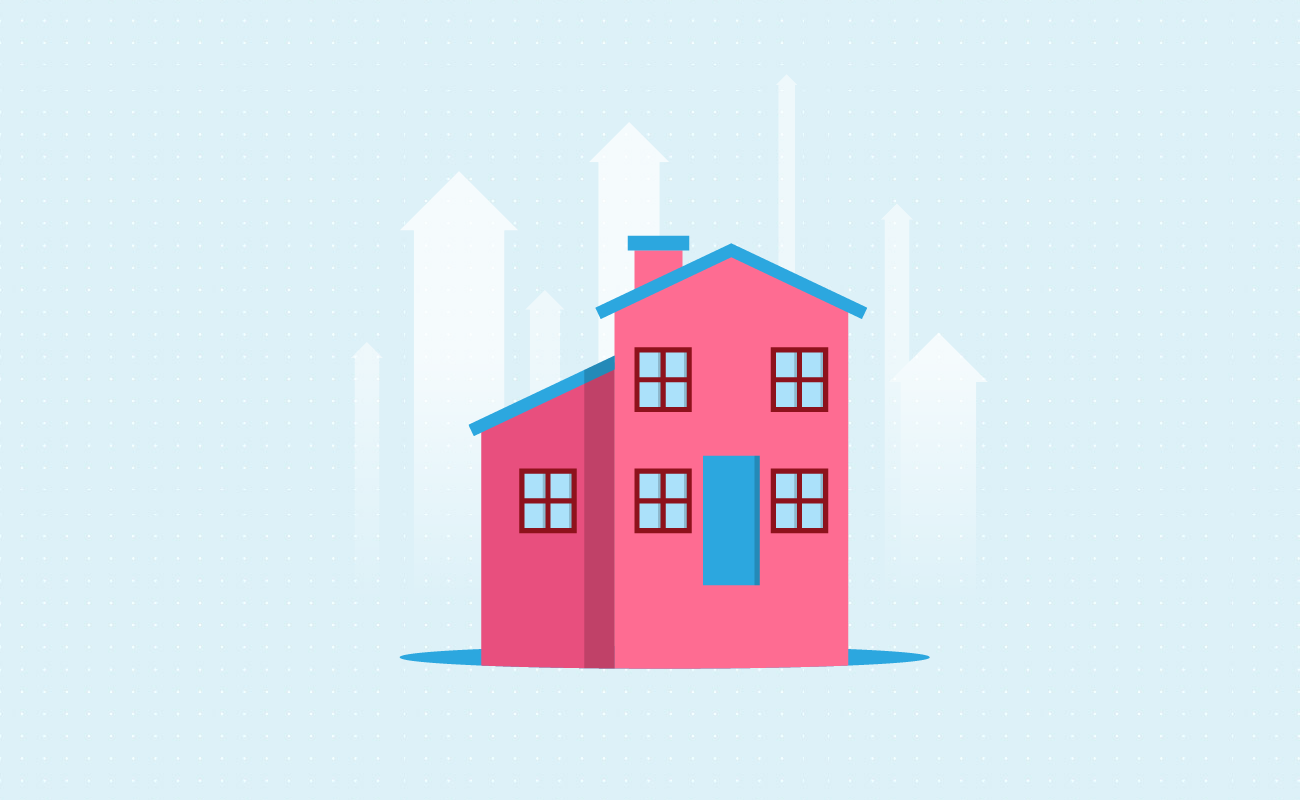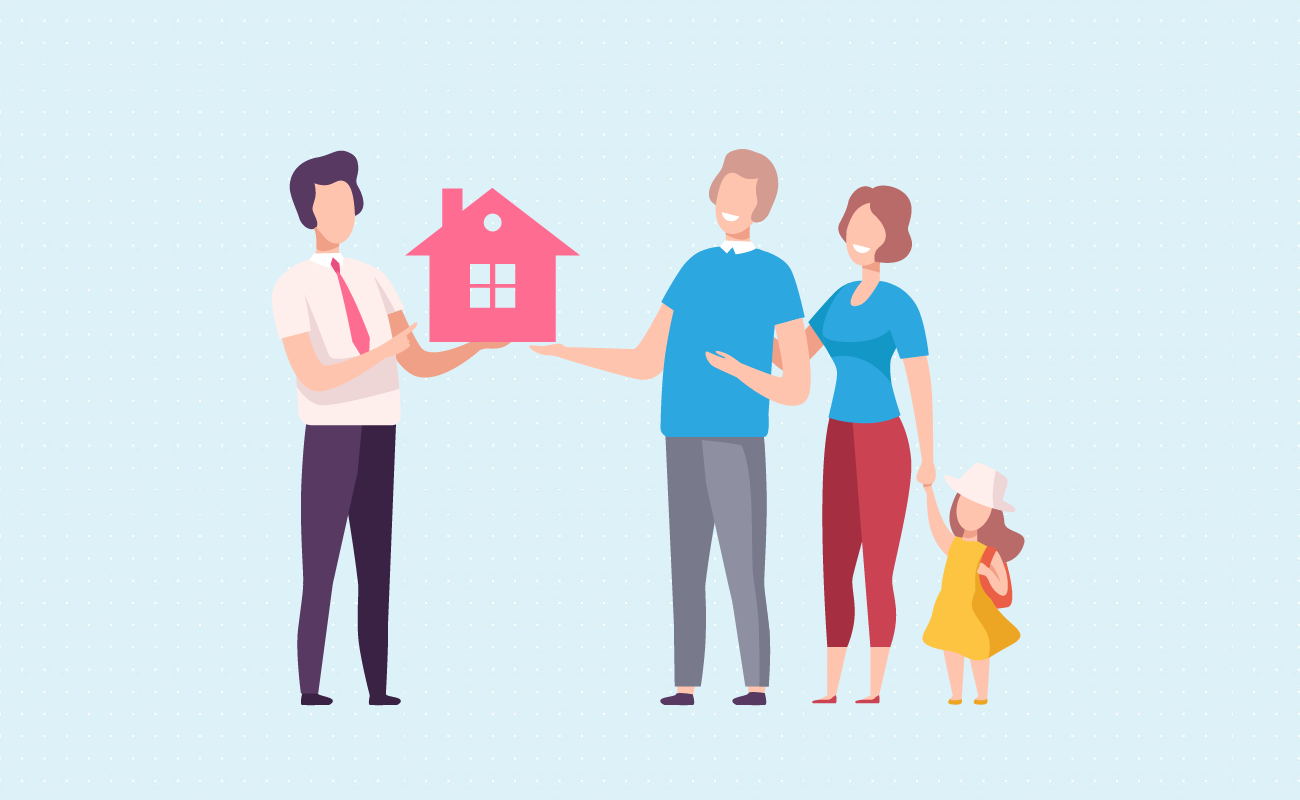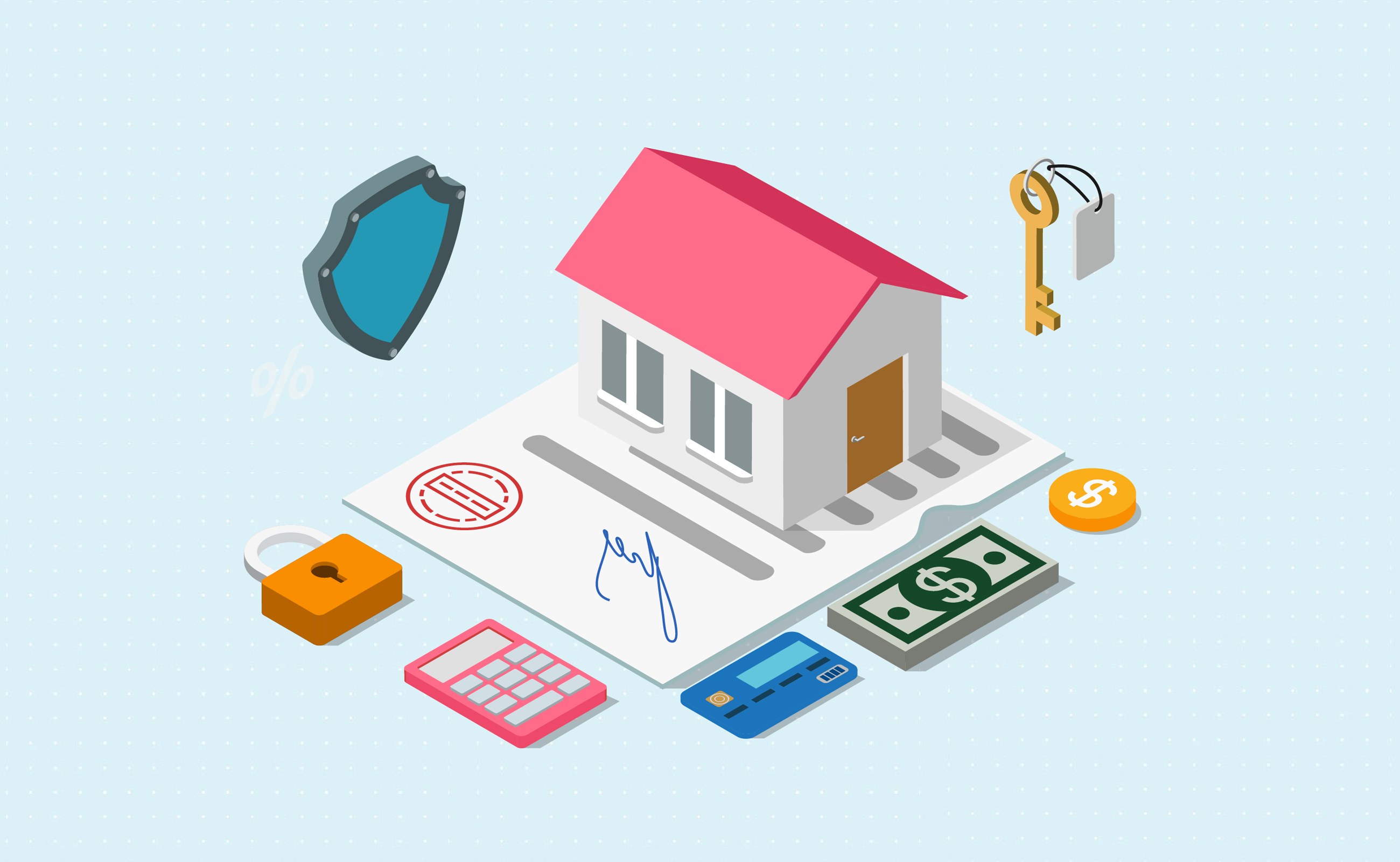Fixed Rates
30 yr
25 yr
20 yr
15 yr
10 yr
Compare Terms
Compare Rates
Real APR
Adjustable Rates
Qualification
Affordability
Renter Affordability
Rent vs Buy
Price per Square Foot
Jumbo
Home Sellers
 Fixed vs ARM Mortgage Payment Calculator
Fixed vs ARM Mortgage Payment CalculatorThis calculator that will help you to compare a fixed rate mortgage with a fully-amortizing adjustable rate mortgage (ARM).
Guide published by Jose Abuyuan on October 12, 2020

Deciding on the right mortgage deal involves many factors. Homebuyers must have a good credit rating to qualify for a favorable rate. And to maximize your interest savings, it’s important to compare mortgage rates with different lenders.
Apart from these considerations, you must first decide on your loan’s payment structure: Should you get a fixed-rate or an adjustable-rate mortgage (ARM)? While more homebuyers choose fixed-rate loans, it’s important to understand when an ARM might work for you.
Our guide will explain the difference between fixed-rate mortgages and ARMs, including their benefits and disadvantages. By discussing how each option works, we’ll give you a better idea which suits your needs. We’ll also walk you through different factors to consider before deciding on a loan. Then, using our calculator, we’ll illustrate how monthly payments and interest costs compare between ARMs and fixed-rate mortgages.
Mortgages come in two primary payment structures, which are fixed-rate loans and adjustable-rate mortgages.
Fixed-rate mortgages have a locked interest rate for the entire life of the loan. This guarantees your monthly principal and interest (P&I) payments remain the same throughout the term. Fixed-rate loans are commonly taken as 30-year or 15-year terms. It follows a traditional amortization schedule which breaks down the precise number of payments required for a term. For instance, if you take a 30-year fixed mortgage, its spread across 360 monthly payments. As long as you make payments on time, your loan should be paid off within the term.
In contrast, adjustable-rate mortgages or ARMs come with an interest rate that changes over the course of the term. This usually starts with a low introductory rate. Once the introductory period ends, the rate increases or decreases depending on market conditions. ARMs come in 30-year terms and can be taken as a straight adjustable-rate loan which shifts right after the first year. Borrowers can also choose hybrid ARMs such as 3/1, 5/1, 7/1, and 10/1 terms. For example, if you take a 7/1 ARM, your rate stays fixed for the first 7 years, after which it adjusts annually for the rest of the term.
In June 2020, the Urban Institute reported that 30-year fixed mortgages comprised 74.4 percent of the housing market, followed by 15-year fixed-rate loans at 16.4 percent. The market share for ARMs in June 2020 accounted for 1.8 percent. This shows that fixed-rate loans are significantly more popular among consumers than ARMs.
Most homebuyers typically take a fixed-rate loan for the stability and convenience of the same monthly P&I payments. Since ARMs involve the risk of rising rates, this is not the most popular option for borrowers. However, when ARM rates are lower than fixed-rate mortgages, borrowers take advantage of the low introductory rate for affordable monthly payments. Consumers who take ARMs usually sell their property after a few years, or eventually refinance into a fixed-rate loan to lock in a low rate.

The low introductory rate on ARMs can provide affordable monthly payments. This allows you to prepay your mortgage while your rate has not yet adjusted. However, to discourage this practice, lenders impose steep prepayment penalties on mortgages, which usually last for the first 3 years of the loan. Prepayment penalty also discourages consumers from selling or refinancing their mortgage early.

Fixed-rate mortgages are more appealing to consumers because the rate remains the same. As mentioned earlier, you don’t need to worry about increasing monthly P&I payments. The predictability allows you to know exactly how much to set aside, making it easier to budget monthly expenses. This gives you peace of mind, assuring your mortgage payments remain within an affordable range.
Fixed-rate loans are typically taken as 30-year and 15-year terms. Consumers can also obtain 20-year and 10-year terms. 25-year fixed-rate loans are an option, but they are not commonly chosen by consumers in the U.S.
With fixed-rate mortgages, interest rates vary depending on the length of the term. Extended terms like 30-year fixed loan are assigned higher rates, while shorter terms such as 15-year fixed mortgages have lower rates. Lenders place lower rates to shorter terms because they carry less risk. Borrowers pay for it sooner, which also generates lower interest costs. On the other hand, long-term loans such as 30-year fixed mortgages are riskier because inflation reduces the dollar value over time. To protect against this duration risk, lenders assign higher rates to longer terms.
The table below shows different fixed-rate loans with their corresponding rates as of October 9, 2020:
| Loan Term | Mortgage Rates (APR) |
|---|---|
| 30-Year Fixed | 3.05% |
| 20-Year Fixed | 3.00% |
| 15-Year Fixed | 2.56% |
| 10-Year Fixed | 2.54% |
Despite the higher rate, many consumers prefer 30-year fixed mortgages. Extended terms come with affordable monthly payments compared to shorter loans. The longer term also allows consumers to qualify for a larger loan amount. They can use this to purchase a bigger property or a house in a better neighborhood.
Meanwhile, if you intend to obtain a shorter term, expect to have higher monthly payments. This is necessary to pay down your mortgage within a faster period. When you pay your mortgage earlier, you save tens and thousands of dollars on interest costs.
Let’s take the example below. Suppose your house is priced at $300,000 and you make a down payment of $60,000 on the mortgage. Let’s compare payments between a 30-year fixed mortgage and a 15-year fixed loan.
| Loan Term | 30-Year FRM | 15-Year FRM |
|---|---|---|
| Interest rate (APR) | 3.05% | 2.56% |
| Monthly P&I payment | $1,018.33 | $1,607.08 |
| Total interest | $126,599.90 | $49,274.69 |
We used the mortgage payment calculator for the results above.
Based on the example, if you take a 15-year fixed mortgage, your monthly P&I payment will be $1,607.08. This is $588.75 more expensive than the 30-year fixed-rate loan. The expensive sum might not be realistic for people with tight budgets. But on a positive note, you’ll pay your mortgage in half the time, which generates lower interest costs.
If you choose a 30-year fixed mortgage, your total interest will be $126,599.90. However, with a 15-year fixed mortgage, you’ll only spend $49,274.69 on total interest. This saves you $77,325.21 on lifetime interest costs. When taking a fixed-rate loan, consider a shorter term to gain the most interest savings.
Of course, in reality, many consumers have limited budgets. Others may only afford a 30-year fixed mortgage. But don’t fret. You can still reduce your interest expenses and shorten your term by making extra payments. This can remove a couple of years off your loan term and save thousands of dollars on interest charges.

Again, be sure to ask your lender about prepayment penalty before applying extra payments. Some lenders may allow you to prepay up to 20% of your principal during the penalty period before triggering any fees. Prepayment penalty usually lasts for the first 3 years of a mortgage. After this, you can safely make additional payments to reduce your outstanding principal balance faster.
On the other hand, choosing a fixed-rate loan also comes with disadvantages. First, it might be more difficult to qualify for a fixed-rate mortgage than an ARM. Fixed-rate loans require a good credit score and a clean credit background. According to Experian, if your credit needs improvement, you might find that ARMs have more lenient credit standards than fixed-rate mortgages.
Next, if you end up with a high rate, your mortgage will be very costly. If market rates decrease significantly, you cannot make lower monthly payments. The locked rate will subject you to high monthly payments for the rest of the term.
If you’re not happy with your current rate, the only way to obtain a lower one is to refinance your mortgage. Refinancing is essentially replacing your existing loan with a new one. It allows you to shorten your term and secure a much lower rate. However, this comes with steep closing costs, which is usually 2% to 5% of your loan.
Moreover, you must have a credit score of at least 620. If you want a lower rate, you must have a higher credit score. To justify the expensive cost, financial experts recommend refinancing 2 percentage points lower than your current rate. This will help you reach a breakeven point in refinancing within a couple of years.
The table below summarizes the pros and cons of fixed-rate loans:
| Pros | Cons |
|---|---|
| Your rate stays the same for the entire loan. | As a trade-off for stability, it usually comes with a higher rate than ARMs. |
| Your P&I payments remain the same. | It might be more difficult to qualify for a fixed-rate mortgage than an ARM. |
| No payment shock from surprise increases. | If you get a high rate, the only way to shift to a lower rate is to refinance your mortgage. |
| It’s easier to budget your monthly payments. | If market rates significantly drop, your rates stays the same. You cannot make lower monthly payments. |
| Helps you build significant equity from the start. |

ARMs are beneficial to borrowers when their rates are lower than fixed-rate loans. You can take advantage of the ARM’s introductory period which starts off with a low rate. The low initial payments also allow borrowers to qualify for a larger loan amount. This gives them the option to purchase a bigger home or relocate to a better location. If you’re lucky, after the introductory period, market rates may reset lower. This can help you save hundreds of dollars per month on mortgage payments.
ARMs typically come in 30-year terms with an introductory period of a couple of years. These are 3/1, 5/1, 7/1, and 10/1 ARMs. For instance, in a 3/1 ARM, the 3 refers to the years of the introductory phase. After this phase, your rate shifts based on the market index which your loan is tied. Meanwhile, 1 refers to the frequency at which the rate adjusts, which is usually once a year after the introductory phase.
Below are examples of ARM terms and their corresponding rates as of October 12, 2020:
| Loan Term | Mortgage Rates (APR) |
|---|---|
| 5/1 ARM | 4.040% |
| 7/1 ARM | 3.830% |
| 10/1 ARM | 4.040% |
Experian stated that ARMs are a common type of subprime mortgage, which makes them more accessible to borrowers with limited or poor credit. ARM’s initial affordability also makes them an attractive option to borrowers with fair to good credit scores.
ARMs are a good fit for borrowers who intend to sell their house in a few years or refinance their loan. If you have a career that requires you to move every couple of years, an ARM might suite you. You can make affordable payments during the introductory phase before you sell the house. People who expect an increase in income, such as someone expecting a raise or graduating from med school, may also take ARMs. More money coming in helps you afford payments if rates increase.
Likewise, borrowers who intend to refinance their loan after a few years also take this option. You can benefit from the low introductory rate and eventually refinance into a fixed-rate loan. If you do not plan to refinance, make sure you have enough funds to cover increasing monthly payments.
On the other hand, the unpredictability of shifting rates makes ARMs unattractive to many borrowers. You must be prepared to cover the maximum cost of monthly payments if your rate increases throughout the years. This can seriously strain your household budget and put you at risk of default.
Another downside to choosing an ARM is negative amortization, which occurs when your regular payments fail to cover the loan’s interest expenses. This increases your principal balance instead of decreasing it gradually. When negative amortization happens, you end up owing more on your mortgage than your house is worth, which puts your home at risk of foreclosure.
ARMs are more complex than fixed-rate mortgages. Because of the changing rate, it’s a lot harder to plan your budget. Before deciding on this option, take note of the following factors:
An index is a benchmark interest rate that reflects general market conditions. The performance of a referenced index, together with your loan’s margin, determines interest rate changes for ARMs. Lenders use this basic formula to calculate your new interest rate when it’s time for it to adjust: Index + Margin = Interest Rate. According to the Consumer Financial Protection Bureau (CFPB), lenders typically decide which index your loan will be based on. Once your reference index has been chosen, it cannot be revised after closing.
The following are common indexes used to determine mortgage rates:

When interest rates increase, it’s better to have your mortgage indexed against a lagging index such as COFI. But when rates decrease, leading indexes such as CMT are more advantageous to borrowers. Furthermore, LIBOR is scheduled to be phased out sometime after 2021, according to CFPB, citing it as a less accurate and reliable index. In place of LIBOR, many lenders tie ARM rates to SOFR.
When you take an ARM, you agree to pay a higher percentage rate than the referenced index. The margin is the number of percentage points added to the referenced index by your lender after the introductory period ends. This is established in your loan agreement and cannot be changed after closing.
As previously mentioned, ARM rates commonly reset once a year after the introductory period. But depending on your loan, other ARMs reset every 6 months or every month. The new rate is calculated on the reset date by adding the margin to the index value. This new rate then applies to the next reset date.
ARMs come with rate caps that limit how high your rate can adjust. Two different lenders may have the same introductory period rate but have varying rate caps. Make sure to check this so you have an idea how much your rate can change. You can also ask your lender for the highest payment amount you may need to pay based on your rate cap.
Rate caps come in three types:
1
Initial adjustment cap – Indicates how much your interest rate can increase the first time it adjusts once the introductory phase ends. This is typically around 2 to 5 percent above the initial rate.
2
Subsequent adjustment cap – Indicates how high the rate can increase following the first adjustment. It’s usually 2 percent above the initial rate.
3
Lifetime adjustment cap – Indicates the maximum or total rate increase allowed over the life of your loan. This cap is commonly around 5 percent, but other lenders may assign a higher lifetime adjustment cap.
The following table summarizes the pros and cons of choosing adjustable-rate loans:
| Pros | Cons |
|---|---|
| Usually has a lower introductory rate than fixed-rate loans. | Comes with unpredictable rates. |
| The lower rate means more affordable monthly payments than a fixed-rate mortgage. | When the introductory period ends, your rate may increase, resulting in higher monthly payments. |
| May be easier to qualify for than a fixed-rate mortgage, accessible to borrowers with limited or poor credit. | If rates continue to rise, it may cause payment shock. Failing to make payments, it puts you at risk of foreclosure. |
| The low introductory payments may allow you to qualify for a larger loan amount. | ARMs come with the possibility of negative amortization, which happens if your payments fail to cover the loan’s interest costs. |
| After the introductory period, if your interest rate resets to a lower rate, you can make lower monthly payments. | It’s harder to plan your budget compared to a fixed-rate loan. |

ARMs are often chosen by jumbo mortgage borrowers for their low introductory rates. Likewise, this helps them make affordable monthly payments when rates are low. Jumbo loans are mortgages that exceed the loan limit prescribed by the Federal Housing Finance Agency. It’s a type of conventional financing specifically made to back expensive homes in high-cost areas.
Before deciding on a fixed-rate loan or ARM, refer to these guide questions below. Thinking about your situation and current market conditions should help you determine which option can work for you.
How long do you intend to live in the house?
Homebuyers who plan to live longer in a home will benefit from a fixed-rate mortgage. It allows you to gain significant home equity right away because of the fixed payments. Having the same P&I payments make it easier to organize your finances in advance.
On the other hand, if you’re only staying for a couple of years, it’s better to take an ARM. This is most advantageous when ARM introductory rates are lower than fixed-rate loans. You can make affordable monthly payments during the introductory phase. But again, before selling the house, take note of prepayment penalty which usually stays in effect for the first 3 years of the loan. After this, you may safely sell your property without worrying about expensive penalty fees. If you intend to stay in the house much longer, you can refinance your ARM into a fixed-rate loan to secure a low rate.
Are mortgage rates currently rising or falling?
When rates are rising, you might end up with a high interest rate if you choose a fixed-rate loan. Though you can refinance to a lower rate later on, this entails expensive costs. Consider ARMs especially when rates are significantly lower than fixed-rate mortgages. The lower introductory rates can make your monthly payments cheaper. However, if current mortgage rates are decreasing, it’s a good time to lock in a low rate. This way, when rates increase in the next 10 or 20 years, market changes will not affect your payments.
Can you afford monthly payments when interest rates get higher?
While it’s tempting to choose an ARM for low monthly payments, borrowers should also prepare for higher monthly payments. If you have a tight budget which cannot accommodate higher monthly payments, do not take this option. Before you take an ARM, make sure you have enough funds to cover the maximum monthly payment. Borrowers with good credit and high income are usually the ones who can afford the risk of increasing payments.
To understand how fixed-rate loans and ARMs work, let’s compare their monthly payment and total interest cost. Using the calculator above, let’s estimate payments for a home priced at $300,000 with a 20 percent down payment of $60,000 and a loan term of 30 years.
| Loan Details | 30-year Fixed-Rate Loan | 30-year 5/1 ARM |
|---|---|---|
| Fixed interest rate (APR) | 3.05% | — |
| Introductory rate (APR) | — | 4.04% |
| Expected initial adjustment (%) | — | 1% |
| Expected subsequent adjustment (%) | — | 0.25% |
| Rate cap (%) | — | 8% |
| Beginning monthly P&I payments | $1,018.33 | $1,151.34 |
| Maximum monthly P&I payments | $1,018.33 | $1,591.26 |
| Total interest | $126,600.62 | $283,478.03 |
In our example, the fixed-rate option has a slightly lower interest rate of 3.05% APR than the ARM with 4.04% APR. Since the rate is locked in a fixed mortgage, you don’t have to worry about an introductory rate, initial adjustment rate, subsequent adjustment rate, or rate cap. On the other hand, the initial adjustment rate for the ARM is 1%, while the expected subsequent adjustment rate is 0.25%, and the rate cap is at 8%.
For the fixed-rate loan, your monthly payment will be $1,018.33 for 30 years. Meanwhile, your beginning monthly payment for the ARM will be $1,151.34 for the first 5 years. That’s $133.01 more expensive than the fixed-rate mortgage. If rates keep increasing, your maximum monthly payment under an ARM will be $1,591.26. This is $572.93 higher than the fixed-rate loan, and $439.92 more expensive than your initial ARM payment. Thus, you must prepare an extra $439.92 to cover maximum monthly payments.
As for interest costs, you’ll spend a total of $126,600.62 on total interest if you take a fixed-rate loan. Again, this is a definitive amount which does not change as long as you make payments on time. On the other hand, because interest rate and payments change with an ARM, your total interest can cost up to $283,478.03. This is more expensive by $156,77.41 if your payments keep increasing. However, if rates fall, your payments will also decrease, which can yield significant savings.
Our example above shows that it’s better to take a fixed-rate mortgage that has a lower rate than an ARM. Your monthly payments will be affordable for the entire life of the loan. If the introductory rate for an ARM is not low enough, taking this option may not be worth the cost.
Next, how would monthly payments and interest costs compare if the fixed-rate loan has a higher interest rate than the ARM? Let’s review the example below.
| Loan Details | 30-year Fixed-Rate Loan | 30-year 5/1 ARM |
|---|---|---|
| Fixed interest rate (APR) | 4% | — |
| Introductory rate (APR) | — | 3% |
| Expected initial adjustment (%) | — | 1% |
| Expected subsequent adjustment (%) | — | 0.25% |
| Rate cap (%) | — | 8% |
| Beginning monthly P&I payments | $1,145.80 | $1,011.85 |
| Maximum monthly P&I payments | $1,145.80 | $1,487.85 |
| Total interest | $172,485.63 | $233,957.04 |
In this example, let’s suppose the ARM’s introductory rate is 3% APR while the fixed-rate loan is higher at 4% APR. Your monthly payment for the fixed-rate mortgage will be $1,145.80 for the entire term. However, if you take the ARM, your beginning monthly payment will be $1,011.85 for the first 5 years. This is $133.95 more affordable than the monthly payment for the fixed-rate loan. And if rates increase, your maximum monthly payment will be $1,487.85, which is $476 more expensive than your initial monthly payment. This means you must have an extra $476 to anticipate increasing monthly payments.
When it comes to interest costs, you spend a total of $172,485.63 on overall interest if you take the fixed-rate loan. But if your choose the ARM, your total interest cost can reach up to $233,957.04 if rates continue to increase. This is $61,471.41 more expensive than a fixed-rate loan. However, if rates continue to drop, your monthly payments will decrease with an ARM, which also yields substantial savings.
This second shows when it’s beneficial to take an ARM over a fixed-rate mortgage. You can make more affordable payments than the fixed-rate option for the first 5 years. If rates increase after this period, you have the option to refinance to lock secure a lower rate.

Mortgages come in two main payment structures: fixed-rate mortgages and adjustable-rate mortgages (ARM). Depending on market conditions and the type of loan you choose, you can obtain affordable monthly payments and save considerable interest costs on your mortgage.
The most commonly chosen option is the fixed-rate loan. More borrowers prefer it because it comes with a locked rate and predictable monthly P&I payments. ARMs, on the other hand, come with a mortgage rate that eventually shifts after the introductory period ends.
Homebuyers consider ARMs if they won’t be staying long-term in a house, or if they plan to refinance their mortgage in the future. On the other hand, homebuyers who intend to stay longer in a house are a good fit for a fixed-rate loan. It offers stability of monthly payments in exchange for a higher rate. It’s a practical option for borrowers who can afford to make monthly payments at market rates.
It’s beneficial to take an ARM when the introductory rate is significantly lower than a fixed-rate loan. This results in lower monthly payments at least during the introductory period. However, if ARM rates are higher than fixed-rate loans, it makes better sense to choose a fixed term to secure a low rate. It gives you affordable payments without worrying about increasing payments in the future.
Jose Abuyuan is a web content writer, fictionist, and digital artist hailing from Las Piñas City. He is a graduate of Communication and Media Studies at San Beda College Alabang, who took his internship in the weekly news magazine the Philippines Graphic. He has authored works professionally for over a decade.